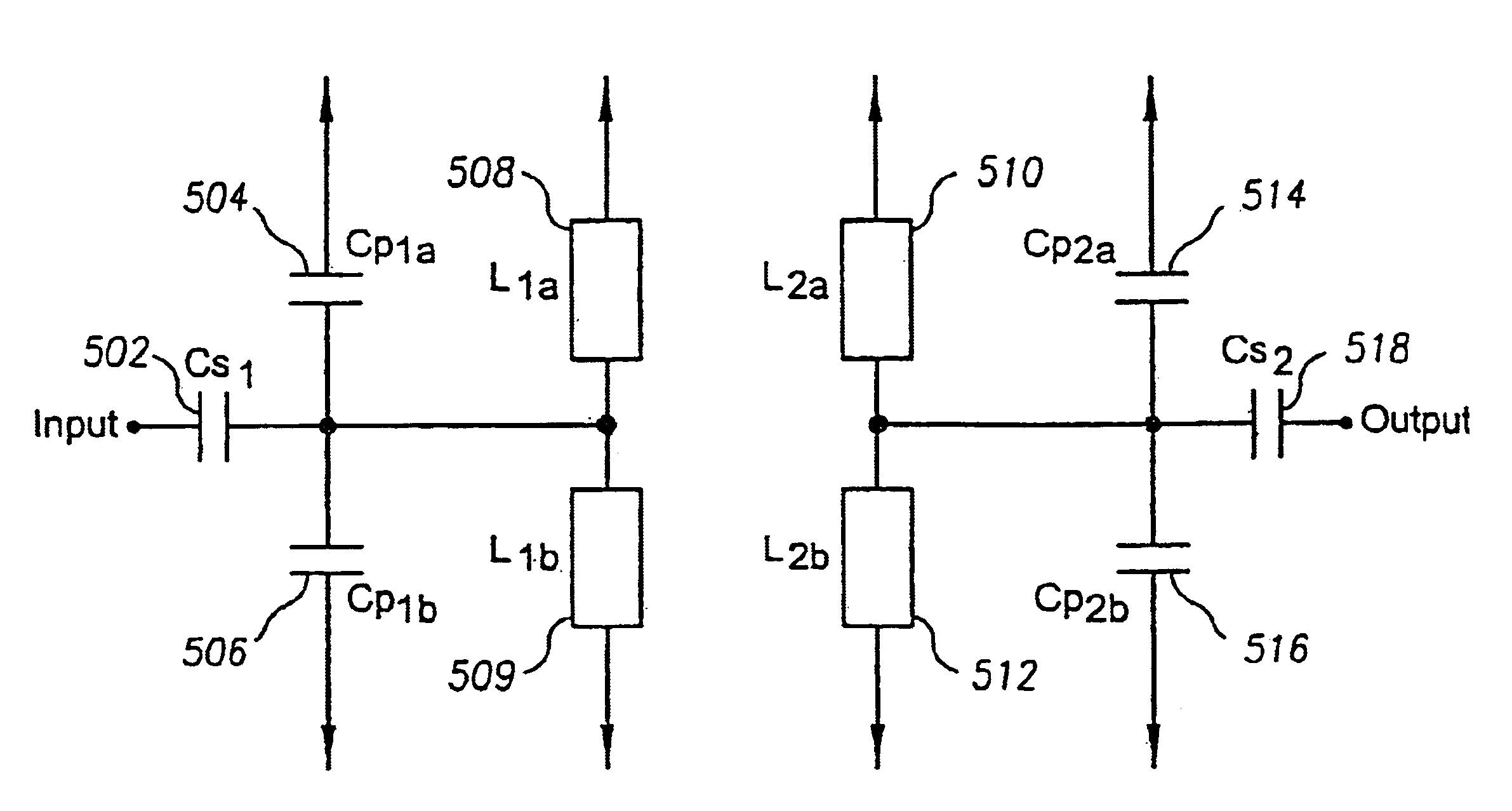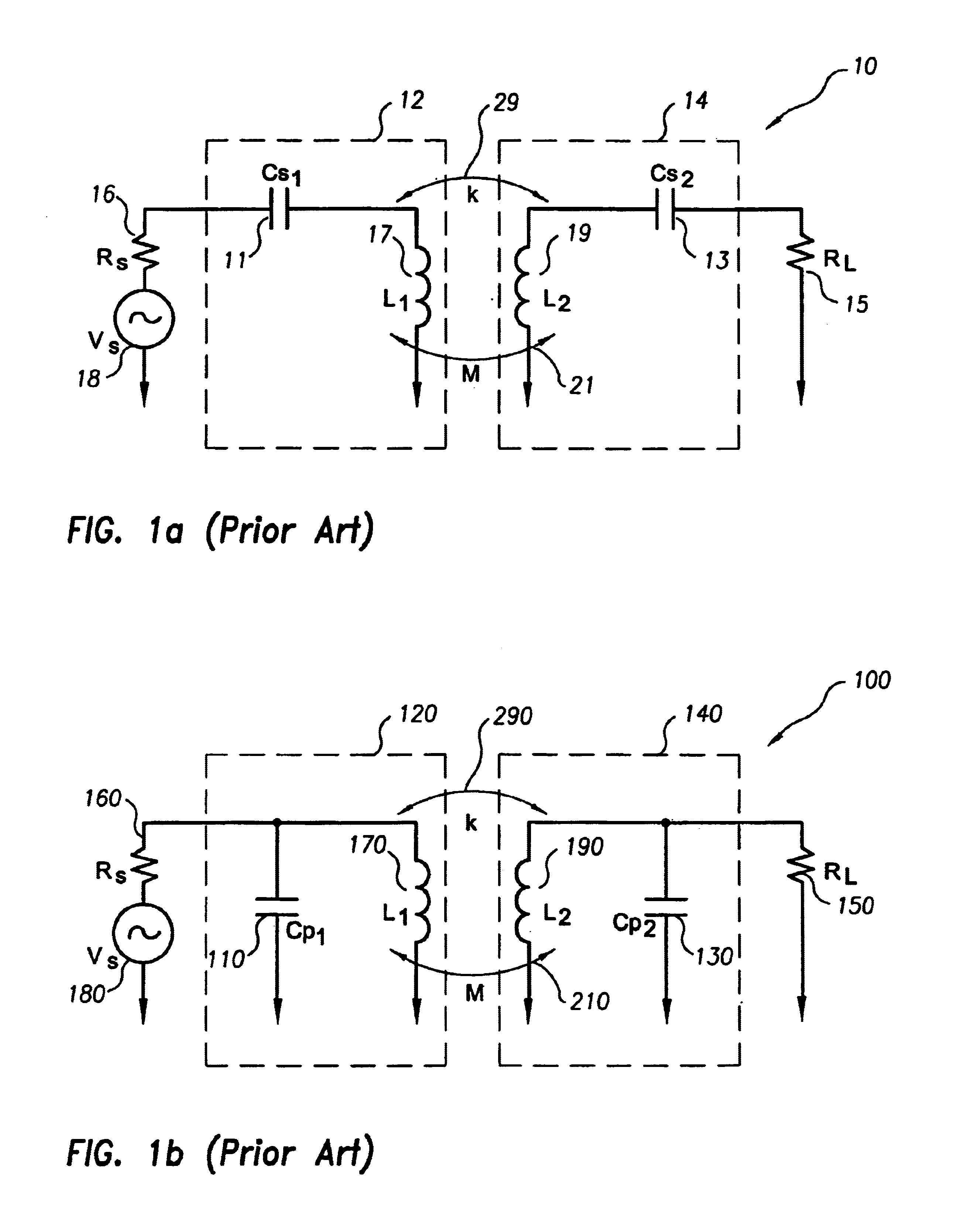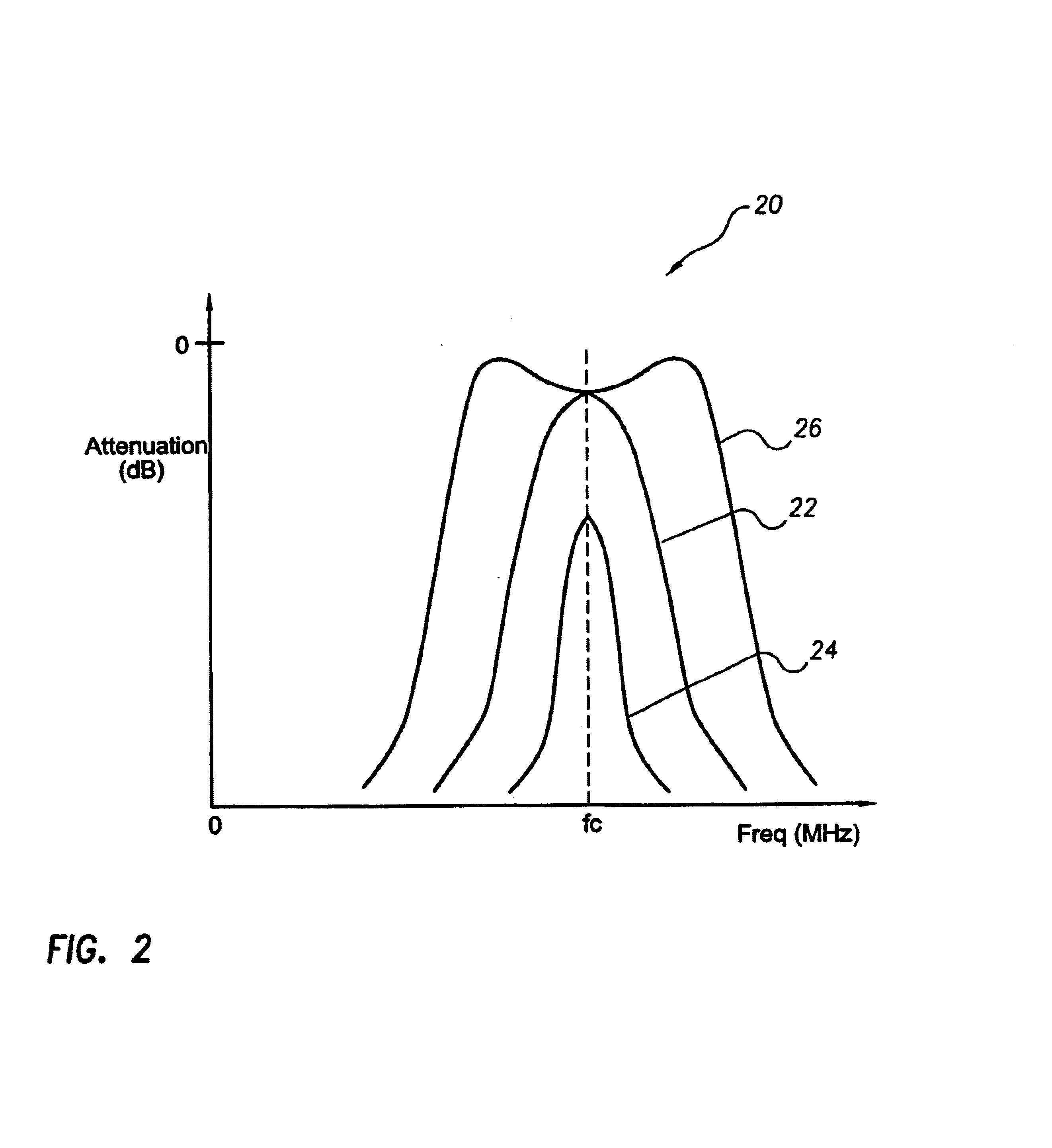Narrow band-pass tuned resonator filter topologies having high selectivity, low insertion loss and improved out-of-band rejection over extended frequency ranges
a resonator filter, narrow bandpass technology, applied in the direction of coils, electrical equipment, waveguide devices, etc., can solve the problems of high insertion loss, high ql, high insertion loss, etc., to achieve low insertion loss, high ql, and high ql.
- Summary
- Abstract
- Description
- Claims
- Application Information
AI Technical Summary
Benefits of technology
Problems solved by technology
Method used
Image
Examples
first embodiment
[0096]The improved response for the double-tuned resonator topology using microstrip inductance elements over the prior art implementation of the topology using prior art lumped inductor components (FIG. 5) is illustrated by comparison of the simulated output responses of FIGS. 9a and 9b (for the present invention) with the responses of FIGS. 6a and 6b (for the prior art). the present invention achieves a QL of about 25 (and thus a fractional bandwidth of about 4%) at a resonant frequency of 400 MHz, compared to a QL of about 6.5 (and a fractional bandwidth of about 15.5%) for the prior art at the same frequency. The out-of-band attenuation is also significantly improved.
[0097]Those of skill in the art will recognize the novelty and nonobvious use of microstrip transmission lines as effective inductor elements in magnetically coupled resonators, which is significantly distinctive over the prior use of microstrip transmission lines as resonators. The use of microstrip transmission li...
fourth embodiment
[0112]Thus, the invention is disclosed in FIG. 32a, in which each of the resonators of the original topologies (FIGS. 7 and 10a ) has a mirror image of itself coupled to its signal line as shown. This topology provides two very important features that permit its application to frequencies ranging from about 500 MHz and over 2 GHz. First, it permits the effective inductance values for each resonator to be reduced even further beyond the limits to which the metal strips can be shortened based on manufacturing tolerances. The inductive elements L1a 508 and L1b 509 of the input resonator and inductive elements L2a 510 and L2b 512 of the output resonator are in parallel with one another respectively, thus reducing the effective inductance of the input and output resonators by over 50 percent.
[0113]The ability to further reduce the inductance values permits parallel capacitors CP1a 504, CP1b 506 and CP2a 514, CP2b 516 to be increased in value as the frequency is increased to offset the de...
PUM
 Login to View More
Login to View More Abstract
Description
Claims
Application Information
 Login to View More
Login to View More - R&D
- Intellectual Property
- Life Sciences
- Materials
- Tech Scout
- Unparalleled Data Quality
- Higher Quality Content
- 60% Fewer Hallucinations
Browse by: Latest US Patents, China's latest patents, Technical Efficacy Thesaurus, Application Domain, Technology Topic, Popular Technical Reports.
© 2025 PatSnap. All rights reserved.Legal|Privacy policy|Modern Slavery Act Transparency Statement|Sitemap|About US| Contact US: help@patsnap.com



